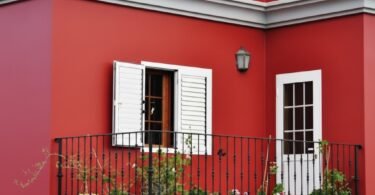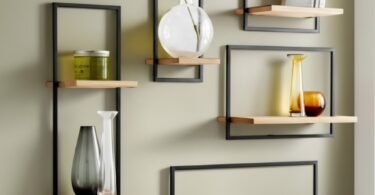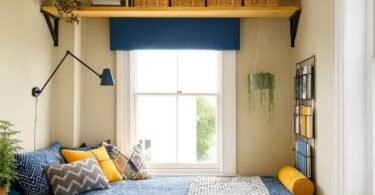Why Water Fountains Deserve More Credit Than They Get
I’ll be honest with you. For years, I walked past water fountains without giving them a second thought. They seemed like those fancy decorative pieces that belonged in hotel lobbies or fancy restaurants, not in regular homes like mine. Boy, was I wrong about that assumption.
Water fountains have this quiet power that most people completely overlook. You can tuck an indoor waterfall into the smallest corner of your living room, mount one on an empty wall that’s been bugging you for months, or place one along your hallway to transform a boring walkway into something that makes guests stop and stare. The variety blows my mind every time I shop for home decor. You’ve got options in stone, ceramic, metal, resin, and even glass. Some are tiny enough to fit on a bookshelf, while others stand as tall as your average person.
The trick isn’t just buying any fountain you think looks pretty. You need to match it to your space. I learned this the hard way when I bought a gorgeous fountain that turned out to be way too large for my entryway. It sat in my garage for three months before I finally found the right spot for it in my backyard. Think about your room’s size, the existing decor style, and what kind of statement you want to make. A minimalist apartment calls for something different than a rustic country home.
What really opened my eyes was discovering that outdoor fountains are just as versatile. You can create a whole different atmosphere in your garden or backyard with the right water feature. I’ve seen people transform plain concrete patios into peaceful retreats just by adding one well-placed fountain. The sound of trickling water does something to your brain that’s hard to explain until you experience it yourself.

Using Wall Fountains to Transform Your Outdoor Spaces
Outdoor wall fountains changed the game for my backyard, and I’m not being dramatic here. Before I installed one, my pool house looked plain and uninviting. The space had good bones but no personality. One fountain later, and suddenly people wanted to hang out there.
These fountains work magic on surfaces you might not expect. I’ve mounted them on wooden decks, stone walls, brick fences, and even painted concrete surfaces. Each location brings out a different character in the fountain. The one on my stone wall looks like it’s been there for decades, like some ancient garden feature. The one near my deck adds a modern spa feeling that makes evening gatherings feel more special.
Multi-level surfaces are where wall fountains really shine. If you’ve got a yard with different elevations or terraced gardens, you can use fountains to tie everything together visually. Water has this natural way of drawing the eye and creating flow between spaces. I put one fountain at the transition point between my upper patio and lower garden area, and it serves as a natural focal point that makes the whole yard feel more connected.
Dirty or weathered surfaces get a second life with the right fountain placement. My old brick wall had seen better days, covered in moss and looking tired. Rather than power washing and repainting, I installed a wall fountain that made the weathered look seem intentional, like some European garden feature. Sometimes what looks like a problem becomes part of the solution.
The benefits go way beyond just looking nice. Birds started visiting my yard more often after I installed fountains. They use them for drinking and bathing, which adds this whole wildlife element I didn’t expect. My neighbor joked that I’d created a bird spa, and you know what? She wasn’t wrong. Watching cardinals and blue jays splash around in the fountain basin beats watching TV most evenings.
Fountains bring life to dead zones in your yard. You know those spots where nothing seems to grow right, or where the light hits wrong? Pop a fountain there, and suddenly you’ve got an intentional design feature instead of a problem area. I had this corner near my fence where grass refused to grow no matter what I tried. A fountain turned it into my favorite meditation spot.
The maintenance scares some people away, but it’s really not that bad once you get into a rhythm. I clean my outdoor fountains maybe once a month during the season. You drain them, scrub off any algae, check the pump, and refill. Takes about twenty minutes per fountain. In winter, I bring the pumps inside and cover the fountains with weatherproof tarps. Simple stuff that becomes routine pretty quick.
Creating Peace and Tranquility with Water Features
Water does something to our brains that scientists are still trying to fully understand. I’m not a neuroscientist, but I can tell you from personal experience that sitting near my indoor fountain for ten minutes does more for my stress levels than scrolling through my phone for an hour.
The sound is part of it. That gentle trickling noise masks other sounds that normally drive me crazy. I live on a busy street, and before I got my indoor water feature, I could hear every truck, every loud conversation, every barking dog. Now? I hear water. It’s like nature’s white noise machine, except better because it doesn’t sound artificial or looped.
My wife was skeptical when I first suggested getting an indoor fountain. She thought it would be one more thing to clean, one more gadget that would collect dust. Three days after I set it up in our living room, she admitted she was sleeping better. The sound carries just enough into our bedroom to create this soothing background noise. No more waking up to every little sound in the night.
Gardens and yards transform when you add water features. I used to think my backyard was nice enough with just plants and patio furniture. Then I added my first outdoor fountain, and the whole space shifted. Friends started asking if they could come over just to sit outside. My teenage son, who usually stays glued to his phone, actually sits by the fountain to do homework sometimes.
The fragrance thing surprised me. I didn’t realize that fountains can affect how your garden smells until I noticed it myself. The moisture from the fountain seems to amplify the scent of nearby flowers and herbs. My lavender plants near the fountain smell stronger than the ones on the other side of the yard. The jasmine by my wall fountain creates this incredible perfume in the evening that makes you want to stay outside way past dark.
Different fountain styles create different moods. I’ve experimented with several types over the years, and each one brings its own personality. A modern geometric fountain in stainless steel gives off completely different vibes than a natural stone fountain with rough edges. You can shift the entire feeling of a space just by choosing the right fountain design.
Basin fountains, where water collects in a pool at the bottom, create this meditative quality. You can watch ripples form and spread, see reflections dance on the water’s surface. I find myself zoning out watching the patterns sometimes, and I mean that in the best way possible. It’s like active meditation without having to sit cross-legged or chant anything.
Pedestal style fountains have more drama to them. Water cascades down from a height, making more sound and movement. These work great as statement pieces when you want something that commands attention. I’ve got one in my front yard that makes visitors slow down as they approach the house. It sets a tone before people even knock on the door.
The setup matters more than you might think. A fountain in the wrong spot loses its impact. I moved my indoor fountain three times before I found the perfect location where the sound carried through the room without overwhelming conversation. Trial and error taught me that corners amplify sound, while open spaces let it dissipate more naturally.

Understanding Pedestal Fountains and Their Installation Needs
Pedestal fountains became my specialty after I installed a few and learned from my mistakes. These fountains stand on a base or column, raising the water feature up off the ground. They look stately and traditional, like something you’d see in an Italian villa or an English garden.
Wall mounting works great for pedestal fountains, but you can’t just slap them against any surface and hope for the best. The foundation matters big time. I learned this when my first outdoor pedestal fountain developed a lean after one rainy season. Turns out, soft ground shifts and settles, and fountains are heavier than they look.
You need a solid, stable base underneath these fountains. Concrete works perfectly. So do brick pavers, stone slabs, or even compacted gravel with a flat stone on top. The key is creating a level surface that won’t move or sink over time. I spent a weekend building a proper base for my garden fountain, using sand to level everything out, then laying thick pavers in a bed of gravel. That fountain has been rock solid for three years now.
Most pedestal fountains are hollow inside, which surprises people when they first handle one. This design keeps them lighter and easier to move, but it means they’re more vulnerable to tipping if the base isn’t stable. You’re basically dealing with a tall, hollow column filled with water, which creates its own physics challenges.
Ground level installation seems tempting, but it’s risky with pedestal fountains. Rain softens soil. Sprinkler systems create wet zones that turn firm ground into mush over time. I watched my neighbor’s beautiful fountain slowly tilt over one summer because he’d placed it directly on grass. By fall, it was leaning at a noticeable angle. We had to dig it up, create a proper base, and reinstall it correctly.
Elevation actually helps with drainage and stability. Raising the fountain base a few inches above ground level keeps water from pooling underneath. I built a simple raised platform using landscape timbers and gravel for one fountain, and it’s made maintenance so much easier. Water drains away naturally instead of sitting under the base.
The weight distribution changes when you fill a pedestal fountain. Empty, they’re manageable for one person to move. Full of water, they’re surprisingly heavy. I always position my fountains first, make sure everything is level and stable, then fill them. Moving a full fountain is asking for trouble, either injuring yourself or cracking the fountain.
Checking level takes patience but saves headaches later. I use a long carpenter’s level across multiple angles to make sure my pedestal fountains sit perfectly flat. Even a slight tilt affects how water flows and can lead to uneven wear on the pump. Ten extra minutes with a level saves you from watching your fountain leak from one side all season.
Winter preparation is part of the deal with outdoor pedestal fountains. I drain mine completely before the first freeze, remove and clean the pumps, and either cover the fountains with tarps or move smaller ones into the garage. Water left inside can freeze and crack even the toughest materials. I learned that lesson the expensive way during my first winter with fountains.

Installing Basin Fountains on Different Surfaces
Basin fountains are my go-to recommendation for people new to water features. They’re more forgiving than pedestal types and work in more locations. The basin catches all the water, so you don’t worry as much about splash or drainage issues.
These fountains actually prefer softer surfaces, which seems backwards until you understand why. Sand or gravel lets the basin settle naturally and distribute weight evenly. The fountain essentially nestles into the surface instead of sitting on top of it. This creates better stability than you’d get with a hard, unforgiving surface.
I installed my first basin fountain on a concrete patio without proper preparation. Big mistake. The rigid surface meant any tiny unevenness in the basin created stress points. Within a month, I noticed a small crack forming. I had to move the whole thing and start over, this time adding a layer of sand to the concrete first.
Sand becomes your best friend when working with basin fountains. It fills gaps, provides cushioning, and allows for easy leveling. I keep a bag of play sand in my garage specifically for fountain installations. You spread a layer an inch or two thick, wet it down, compact it, then check for level. Adjust as needed by adding or removing sand in specific spots.
Hard surfaces need modification before they can properly support basin fountains. You can’t ignore this step and hope for the best. I tried that once. The fountain worked fine for a few weeks, then developed a crack where stress concentrated on one edge. The repair cost more than buying sand and doing it right would have.
The sand layer does more than just cushion. It distributes weight across a larger area, preventing pressure points that lead to cracks. Think of it like wearing snowshoes versus regular boots in deep snow. The weight spreads out instead of concentrating in small spots.
Leveling a basin fountain takes time and patience. I use a long level placed across the basin rim in multiple directions. You want it perfect, or as close as you can get. Even small tilts affect water flow and can cause the pump to run dry on one side. I’ve spent an hour just getting one fountain perfectly level, adjusting sand underneath bit by bit.
The basin size affects how much preparation you need. Small tabletop fountains are forgiving. Large garden basins holding twenty or thirty gallons need serious foundation work. I treat big basin fountains like mini construction projects, measuring twice and taking my time with each step.
Gravel works as an alternative to sand in some situations. I’ve used pea gravel under larger basin fountains, compacting it well and then adding a sand layer on top for fine tuning. The gravel provides drainage, which helps in areas where water tends to collect. The sand on top gives you the level surface you need.
Stress cracks are the main thing you’re trying to prevent with proper installation. These cracks start small, often barely visible, then grow over time as the fountain operates. Water pressure, weight, temperature changes, and vibration from the pump all contribute. A well-prepared base minimizes these stresses and can make your fountain last decades instead of seasons.
Testing before finalizing saves trouble later. I fill new fountain installations partway, let them run for a day, then check everything again. Sometimes the weight of water reveals leveling issues you couldn’t see when the fountain was empty. Better to catch these early when you can still make adjustments easily.

The Amazing Variety of Indoor Water Features
Indoor water features opened up a whole new world for me once I started paying attention to them. I used to think they were all pretty much the same, but that’s like saying all paintings are the same because they’re all on canvas. The variety is wild.
You can find indoor waterfalls designed to fit into wall niches that look built in. I’ve got one in my entryway that fits into a recessed space that used to hold a boring painting. Now people walk in and immediately notice the sound and movement. It makes our home feel more alive and welcoming.
Vestibule installations work great if you’ve got the space. That transition area between outside and inside becomes special when you add a water feature. It’s like creating a decompression zone where you can leave the stress of the day behind before fully entering your home. I wish I had a vestibule big enough for this.
Hallway fountains turn wasted space into something interesting. Long corridors can feel boring and utilitarian. Drop a fountain somewhere along the length, and suddenly people have a reason to pause. My friend installed a wall-mounted fountain halfway down her long hallway, and it completely changed how that space feels.
Wall mounting is probably the most versatile installation method for indoor fountains. You can put them anywhere you’ve got a clear wall and an electrical outlet within reach. I’ve seen them in bathrooms, bedrooms, home offices, living rooms, and even kitchens. Each location creates a different effect.
The materials make a huge difference in the overall vibe. Slate fountains have this natural, earthy quality. Copper develops a patina over time that adds character. Stainless steel looks modern and clean. Glass creates an elegant, almost ethereal effect. Ceramic offers endless color and pattern options. I’ve collected different types over the years, and each one suits different rooms and moods.
Size options range from tiny desktop fountains you could lift with one hand to massive floor-to-ceiling installations that require professional installation. I started small with a tabletop fountain in my office. It convinced me to go bigger, and now I’ve got fountains throughout my house in various sizes.
Shape variety surprises people who haven’t really looked at fountains closely. You’ve got traditional tiered designs, modern geometric shapes, naturalistic rock formations, abstract artistic pieces, and everything in between. Some fountains are round, others rectangular. Some are symmetrical, others deliberately asymmetric. The design possibilities seem endless.
Budget considerations matter, obviously. You can find decent small fountains for under a hundred dollars. High-end custom installations can run into thousands. I’ve bought fountains at every price point, and I can tell you the expensive ones aren’t always better. Some of my favorite pieces were affordable finds that happened to fit their spaces perfectly.
Outdoor fountains for patios, backyards, and gardens deserve their own discussion. The weather resistance requirements change everything. Materials that work indoors might not survive outside. UV exposure, temperature swings, rain, and freezing conditions all take their toll. I choose outdoor fountains with durability in mind first, aesthetics second.
Garden fountains become part of the landscape in ways indoor fountains can’t. You can integrate them with plants, pathways, and other garden features. I’ve got one fountain that sits among my hostas and ferns, creating this little ecosystem where birds and beneficial insects gather. It’s become the heart of my shade garden.
Backyard installations can be dramatic centerpieces or subtle accents. I’ve seen both approaches work beautifully. A friend has a massive three-tiered fountain as the main feature of his backyard, visible from every angle. My approach is more understated, with several smaller fountains tucked into different zones, each creating its own little retreat.
Patio fountains need to work with your outdoor living space. They should enhance conversation areas rather than overwhelm them. I placed my patio fountain where we can hear it from the seating area but it doesn’t interfere with talking. The sound adds ambiance without forcing everyone to raise their voices.
Finding the right fountain for your space takes time and thought. I tell people to live with the space for a while first. Notice where you naturally pause or linger. Those spots are often perfect for fountains. Pay attention to problem areas too. Sometimes a fountain transforms a space you’ve been struggling with into a highlight of your home or garden.
Shopping for fountains got easier once I figured out what I was actually looking for. I measure my spaces carefully, take photos to reference while shopping, and think about the mood I want to create. Impulse buying a fountain usually ends with returns or fountains that sit unused. Take your time and choose deliberately.








Leave a Comment